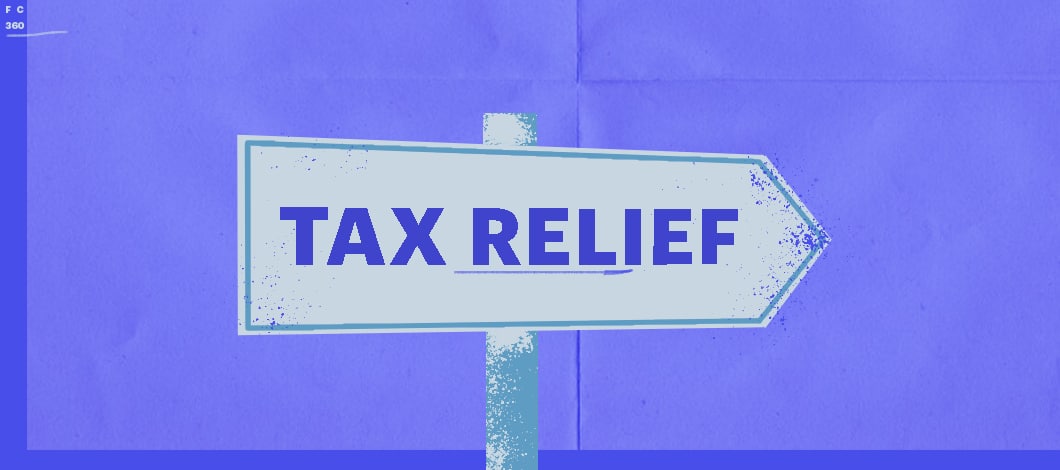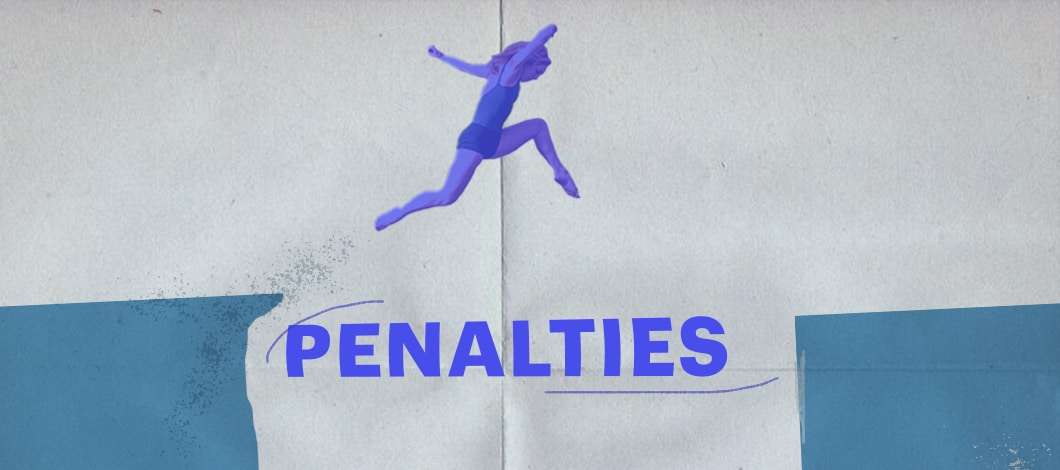The Internal Revenue Service (IRS) offers tax relief options for those facing financial challenges, including COVID-19.
Here are 6 important updates from the latest IRS Taxpayer Relief Initiative:
1. Short-Term Payment Plans Extended to 180 Days
The IRS offers a couple standard options for taxpayers who are having difficulty making tax payments on time. If you can’t make your individual tax payment deadline but you still think you’ll be able to pay your taxes within a few months, the IRS offers a short-term payment plan.
Under this plan, you avoid IRS collection notices and actions by agreeing to pay what you owe within the next few months. Normally, you must pay within 120 days, but to assist taxpayers struggling with financial disruption because of the pandemic, this has been temporarily extended to 180 days. If you need longer than this to pay what you owe, you may be able to file for a long-term installment agreement.
With a short-term payment plan, in contrast to long-term payment agreements, you don’t have to pay any set-up fee. However, you are required to pay accrued penalties and interest until your balance is paid.
Qualifying for a Short-Term Payment Plan
You can qualify for a short-term payment plan if you owe a total of less than $100,000 in combined tax, penalties and interest. Business owners who are sole proprietors or independent contractors can apply as individual taxpayers. There is no short-term payment option for businesses as such, although there are small business tax relief options for long-term installment agreements.
Applying for a Short-Term Payment Plan
You can apply for a short-term payment plan online, by filling out a Form 9465, Installment Agreement Request or by calling 800-829-1040. If you have previously applied online for an online payment or to get a transcript or identity protection payment identification number (IP PIN), you can log into the IRS portal with your existing user identification and password.
You will need to provide certain information to confirm your identity:
- Your name as it appears on your most recent tax return
- A valid email address
- Your address from your most recent return
- Your date of birth
- Your filing status
- Your Social Security number (SSN) or Individual Tax Identification Number (ITIN)
- For certain types of agreements, your balance due amount
- Confirmation of your identity in the form of your financial account number, mobile phone number or an activation code received by mail (which takes 5 to 10 days)
An individual you have authorized with power of attorney can also apply for you.
Making Short-Term Payments
You can make payments in 4 ways:
- Direct payments from your checking or savings account (Direct Pay),
- Check
- Money order
- Debit or credit card
If you pay by debit or credit card, you will incur a processing fee.

2. No-Lien Installment Agreements for 2019 Filers Owing $250,000 or Less
If you only owe for the 2019 tax year and you owe $250,000 or less, the latest IRS tax relief programs have modified long-term installment agreement options to allow you to set up an agreement without a notice of federal tax lien. A federal tax lien is a public document the IRS files to alert creditors that the federal government has a legal claim to your property when you neglect or fail to pay a debt.
An individual or business can apply for a long-term installment agreement by applying online, calling 800-829-1040 or mailing the IRS a Form 9465. If you are applying as a business, in addition to the same type of personal information you would need to apply for a short-term payment plan, you will also need business information such as your employer identification number (EIN).
3. Nonstreamlined Installment Agreements With No Verification for Up to $250,000
Early during the COVID-19 pandemic, in March 2020, the IRS made a procedural update which introduced a new long-term payment option called a nonstreamlined installment agreement (NSIA). This allowed some individual taxpayers owing between $50,000 and $250,000 to enter into long-term payment arrangements without providing financial statements and substantiation as long as monthly payment proposals were sufficient.
In November 2020, the IRS announced it was expanding eligibility for nonstreamlined installment agreements to cover more circumstances for qualified individual taxpayers owing up to $250,000, provided that their case hadn’t yet been assigned to a revenue agent.
4. Relief for Taxpayers Struggling With Existing Installment Agreements
If you have an existing long-term payment agreement with the IRS and you’re having trouble paying it, you have a few options, including requesting revised payment terms, negotiating a partial payment agreement or applying for a deferral.
Revising Your Monthly Payment Amount or Due Date
If you have an existing Online Payment Agreement (OPA) or Direct Debit Installment Agreement (DDIA) you can propose a change to the amount you pay per month or your monthly payment due date. You can propose a change by using the IRS Online Payment Agreement Tool and selecting the Apply/Revise button or by contacting the IRS by phone or mail.
Your proposed payment amount must meet minimum requirements set by the IRS. If your proposed amount doesn’t meet the requirements, you will be prompted to submit a different amount. If you can’t meet the minimum, you will be given instructions for submitting a Form 433-F, Collection Information Statement.
Negotiate a Partial Payment Agreement
Under certain circumstances, IRS relief programs allow taxpayers in financial difficulty to negotiate an agreement to settle their tax debt for less than what they owe, an arrangement known as an Offer in Compromise (OIC).
The IRS typically accepts an OIC offer which represents the most they could expect to collect within a reasonable period. Eligibility is evaluated based on factors such as assets, expenses and income. The IRS provides an online tool for prequalifying OIC eligibility.
To assist taxpayers who already have an OIC agreement and are now struggling with paying it because of the pandemic, the IRS is now offering additional flexibility. To update an OIC agreement, call the IRS at 800-829-1040 or at the number of your bill or notice.
Seek Payment Deferral via Currently Not Collectible Status
If you are unable to pay because of financial hardship, such as lack of income, the IRS offers the option of applying for currently not collectible (CNC) status, which will allow you to defer payments until your financial situation improves. While in CNC status, you will continue to accrue penalties and interest. The IRS may file a lien on you, and your future refunds may go toward your debt.
To qualify, you will need to verify your inability to pay by providing proof such as information about your assets, expenses or income. Prior to approval, you may be required to complete a Form 433-F, 433-A, or 433-B. You can apply for CNC status by calling the IRS at 800-829-1040 or at the number on your bill or notice.
5. New Tax Balances Included in Existing Installment Agreements
Under its latest taxpayer relief initiatives, the IRS will automatically add certain new tax balances to existing installment agreements for individual and out-of-business taxpayers. This will be applied instead of defaulting agreements, a move intended to help struggling taxpayers avoid additional complications.

6. Assistance for Avoiding Penalties
The IRS is offering a couple options to provide taxpayers with relief from penalties. These include reasonable cause assistance penalty abatement relief.
Reasonable Cause Assistance
One is penalty relief for what is known as reasonable cause. This means that you used all ordinary business care and prudence to meet your federal tax obligations but were unable to for reasons such as:
- Disasters, such as the pandemic, fire or flood
- Death, serious illness or another serious circumstance causing the unavoidable absence of the taxpayer or an immediate family member
- Inability to maintain records (for instance, your computer database was destroyed in a ransomware attack)
- Another sufficient reason
Note that merely having insufficient funds isn’t a qualifying reason in itself, but the underlying reason for not having enough funds can be.
Under qualifying circumstances, you may be eligible for relief from penalties on your payments. You will still be responsible for interest.
To apply for reasonable cause assistance, contact the toll-free phone number on your notice from the IRS.
Penalty Abatement Relief
The IRS is also extending first-time penalty abatement relief to taxpayers who are subject to tax penalties for the first time. Under a first-time penalty abatement, you may qualify for a waiver on penalties you would normally pay if you meet certain criteria:
- You haven’t had a penalty on previous returns or for 3 tax years prior to the one in which you received a penalty
- You’ve filed all currently required returns or requested an extension
- You’ve paid or made arrangements to pay any taxes due
Failure-to-pay penalties will continue to accrue until the tax you owe is paid in full, so it may be strategic to wait to request penalty abatement relief until after you’ve paid any tax due.
To apply for penalty abatement relief, contact the toll-free phone number on your notice from the IRS.
Get the Tax Relief Help You Need
If you’re struggling to pay your taxes because of the impact of COVID-19 or other financial challenges, you may be eligible for one of the IRS tax relief options covered above.
Your tax professional can help you evaluate your options. If you need additional help meeting your tax payments or other obligations, consider applying for small business financing. Read our blog to learn about federal grants and loans for COVID-19 relief and other small business financing options which can help you in a cash crunch.










